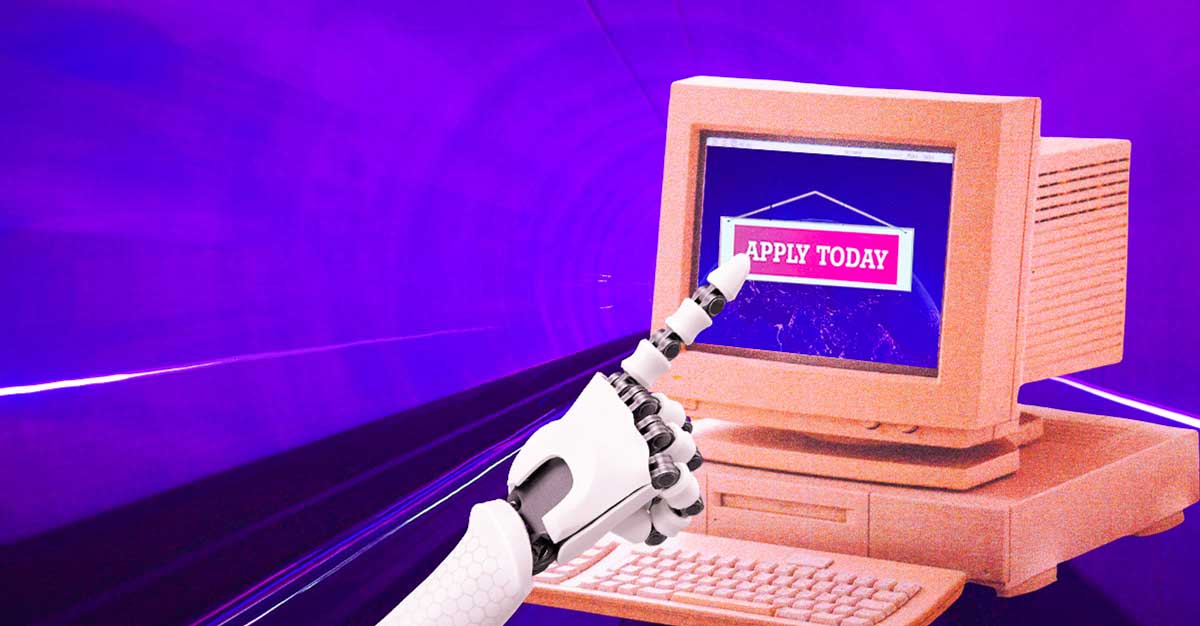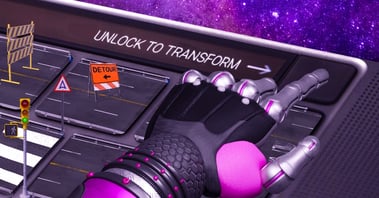The impact of the COVID-19 outbreak was unprecedented and felt around the globe. In addition to the threats caused to public health, livelihoods, and social structures, the pandemic also heavily affected labor markets, economics, and enterprises, leading to widespread business disruptions. These challenges resulted in solutions to ensure work continuity, which will impact HR management and the way of working even beyond the pandemic.
Workplace flexibility is one of the most significant changes brought by the pandemic in the global workplace. The strict social distancing rules forced businesses to implement a remote/hybrid work model in response. HR leaders have taken center stage in responding to the unforeseen challenges that came along with COVID-19 and initiating innovative solutions to keep the workforce engaged, productive, and resilient. While for employees, it has led to a more integrated work and personal life, businesses need to develop new ways to stay in touch with their staff.
Now, as the world is gradually healing from the effects of the pandemic, it is time for HR managers to redirect their focus toward recovery and ensure their companies are prepared to deal with changing requirements for human resource management.
In this blog, we discuss post-pandemic trends and technologies shaping the future of HR management. We look at how the COVID-19 pandemic has stimulated a digital transformation within the sphere of human resources and explain how the ITONICS software suite can help organizations optimize their HR capabilities to meet present challenges and anticipate future needs.
What is HR innovation?
HR innovation means fulfilling changing needs of the organization and its employees by adopting new ideas, methods, and technologies. HR innovation also anticipates future trends that have the potential to affect workplaces and makes necessary arrangements to respond to these changes. Without a workplace that fosters innovation, employee dissatisfaction can rise and productivity decrease due to outdated and conservative processes. Consequently, turnover within companies will increase as employees seek better opportunities outside the organization.
The COVID-19 pandemic has re-emphasized the “human” element in human resources. Although HR managers still need to oversee productivity and performance, the pandemic has made it clear that understanding, empathizing with employees, and investing in their well-being are equally important to maintain a positive efficiency graph. Moving forward, a management system based on old practices - one with hierarchy and bureaucracy - will no longer be relevant. In the post-pandemic era, there are talents and not labors, teams and not hierarchies, and an ecosystem and not competitors. And most importantly, there is a working model based on adaptability, creativity, and flexibility.
With remote and hybrid work models being established as the new normal across the globe, HR managers must explore innovative solutions to keep employees engaged, and provide them with a good employee experience. HR innovation is, therefore, an urgent need in a post-pandemic work environment.
Post-pandemic trends shaping the future of HR
The recent trends in human resources point towards the ushering of a new workplace environment where a hybrid work model with virtual recruitment, virtual hiring and onboarding, and engaging and retaining employees with virtual training is crucial. HR leaders acknowledge the fact that the COVID-19 pandemic has transformed their role. With this transformation, HR technology has become the key priority for HR leaders, allowing them to be more strategic in their roles to improve the employee experience continuously. We discuss four of the most crucial trends and technologies that initiated innovation in HR.
1. Flexible workplace and unified communications
The pandemic accelerated workplace flexibility out of necessity, and with it, the world witnessed a hastened adoption of various virtual tools to facilitate connection and collaboration within the organization. Unified communications-as-a-service (UCaaS) refers to a cloud-delivered unified communications model that supports multiple communications functions, including enterprise telephony, meetings (audio/video/web conferencing), unified messaging, instant messaging, and presence (personal and team), and mobility and communications-enabled business processes. Companies are propelling the adoption of UCaaS to enable seamless collaboration involving remote and mobile employees. UCaaS consolidates separate tools into a shared platform, allowing companies to integrate their customer relationship management and enterprise resource planning solutions into their communications technology. As a result, this technology can drive improved performance, enhanced agility, and unparalleled customer service.
2. Recruitment and personnel training innovation
For HR managers, Artificial Intelligence (AI) paves the way for saving time and increasing productivity by relieving them of time-consuming, monotonous tasks. The following are the areas where the pandemic proliferated the use of AI in HR:
Recruitment
AI is proving to be a valuable tool for recruitment teams due to benefits like efficiency, personalization, and more informed decision-making based on data. The pandemic has expedited the use of AI and machine learning (ML) in screening resumes for specific abilities and expertise that fit the job listings.
By helping them target and customize outreach to locate the best applicants more quickly, AI and ML solutions specifically boost recruiting and hiring procedures for human resources operations. Machine learning uses predictive analysis to make recruitment more reliable and accurate since it leaves no room for human bias. With valuable insights into the causes of worker turnover, HR can leverage AI technologies to anticipate, understand, and control attrition rates.
Chatbots
An HR chatbot can stimulate human dialogues with candidates and employees to assist with comprehensive and routine tasks like screening candidates, scheduling interviews, managing referrals, etc. Companies can leverage these virtual assistants that can be accessed anytime, anywhere, and on any device, simulating real-world conversations. Candidates and workers who have urgent queries regarding the employment process or benefit concerns can get prompt answers from chatbots. AI tools can also assist your team by automating routine, time-consuming operations like organizing interviews, sending follow-up notes, and maintaining training certifications are all made more accessible by automated workflow.
Training
AI can be used to create hyper-personalized training programs tailored to fit individual employees' needs for effective upskilling and reskilling. This increased personalized training allows employees to learn at their own pace, superseding the need for conventional, one-size-fits-all sessions.
The technology can also gather data about employees' learning styles and analyze them to identify gaps and suggest the most appropriate, productive training method. These tools aid HR personnel in identifying specific skill shortages as firms provide their workforce upskilling and progression opportunities, empowering them to be adaptable and future-ready.
3. Blockchain integration
Blockchain supports the solid storage of a record database where each record is encrypted and can be authenticated for accuracy and security through peer-to-peer verification. Although still in infancy, blockchain holds the potential to revolutionize the daily undertakings of HR professionals at different levels.
Employee data
HR management deals with a massive amount of data, which is personal and confidential. These may be pay, insurance, finance and banking data, time attendance, employee history, etc. Blockchain allows encryption of such sensitive information for more secure storage. Also, by blocking unauthorized access, the technology ensures enhanced security of these critical pieces of information. Moreover, as blockchain decentralizes records, it reduces the chances of criminals gaining access to the numerous sensitive, personal, and financial data the HR department handles.
Payroll
Blockchain can automate and secure payments to employees, contractors, and vendors. The technology facilitates cross-border payments that involve currency exchanges, promoting the "gig economy," which has become extremely common with the pandemic. Also, since payments are verified via distributed ledger in real-time, it eliminates the need for intermediaries like banks and clearing houses. Blockchain also allows businesses to explore alternative payment methods like digital wallets to make payments instantaneously. Moreover, multinational companies may create their blockchain-based corporate currencies, which can be used to transfer value across their business, free of third-party reconciliation costs. It can make the system more robust through fraud prevention, time tracking, tracking payment options, and benefits administration.
Recruitment
The standard methods of seeking and hiring candidates have loopholes for inaccuracy and fraud. For example, candidates may tweak and even fabricate information in their resumes to fit jobs that interest them. However, if these records were stored on the blockchain, applicants could simply provide access to their data to potential employers. Blockchain can thus streamline recruitment by allowing candidates to tokenize their identity and provide virtual credentials that hiring managers know have not been tampered with. This reduces the need to hire outside companies to do background checks for verification.
Smart contracts
Blockchain technology enables transforming paper contracts into digital, smart contracts, establishing enforceable and immutable rights for all parties involved. These self-executing contracts designate transaction terms and penalties in case of violation of these terms, which ascertains timely outcomes without the involvement of intermediaries. Smart contracts eliminate the need to process individual payments manually, thus increasing efficiency and reducing cost. It is also a huge enabler of on-demand pay, where employees withdraw their earrings via a self-service platform per their requirements. For instance, employees can use smart contracts to pay workers or freelancers who have been hired for a certain period. As soon as the time is over, smart contracts process the payment without needing intervention from the payroll team.
4. Digital learning, training, & employee wellbeing
Digital learning
Digital learning platforms are just one of the new opportunities the epidemic has created for retraining and training the workforce. These platforms allow companies to automate workflows, exchange files and resources, and support workers with their tasks. Work-based learning encourages employees to take more initiative and accomplish personal and professional goals. Furthermore, knowledge management can help your staff focus on what's important, eliminate information overload, feel less stressed, and improve your company's overall health by prioritizing it.
Employee wellbeing
Employee wellness and safety have taken the front seat in the HR trends expected to innovate the HR landscape in the future. The strain of adjusting to new work and home habits may also necessitate the need for additional mental health services within the learning and development program. Companies should aim to give employees a safe work environment to maintain a strong workforce amid labor shortages and staffing difficulties brought along by the pandemic. Sharing wellness-focused webinars and up-to-date safety recommendations are now a highly effective use of video tools like Skype, Zoom, and Microsoft Teams. HR managers can also inform remote workers about internal wellness programs and associated activities via social media feeds. This is an effective strategy for motivating and encouraging remote workers to participate in group challenges, leaderboards, and other social features.
Anticipate future needs in HR with ITONICS!
ITONICS is a leading SaaS provider of systematic innovation management. But the use cases of our software are not limited to innovation or R&D departments: With the help of ITONICS, HR managers can keep track of emerging HR trends and technologies and anticipate how they will impact HR practices. The ITONICS Radar is the tool you need to take the first step toward better understanding the drivers of change in human resources.
ITONICS Trend & Technology Radars are designed to identify and manage emerging trends and technologies impacting the future of certain industries, businesses, or in your case, human resources. Our dynamic and interactive radar visualizations offer a focused vision of the future and help spot new opportunities.
If you want to learn more about the features and functionalities of the ITONICS software suite to innovate your human resource management, get in touch with one of our experts for a personal demo.
Have more time?
- Read How to Keep Track of Future Trends and Challenges in HR Management
- Download the ITONICS Business Value Paper
- Listen to the podcast episode People First - Innovating the Individual











